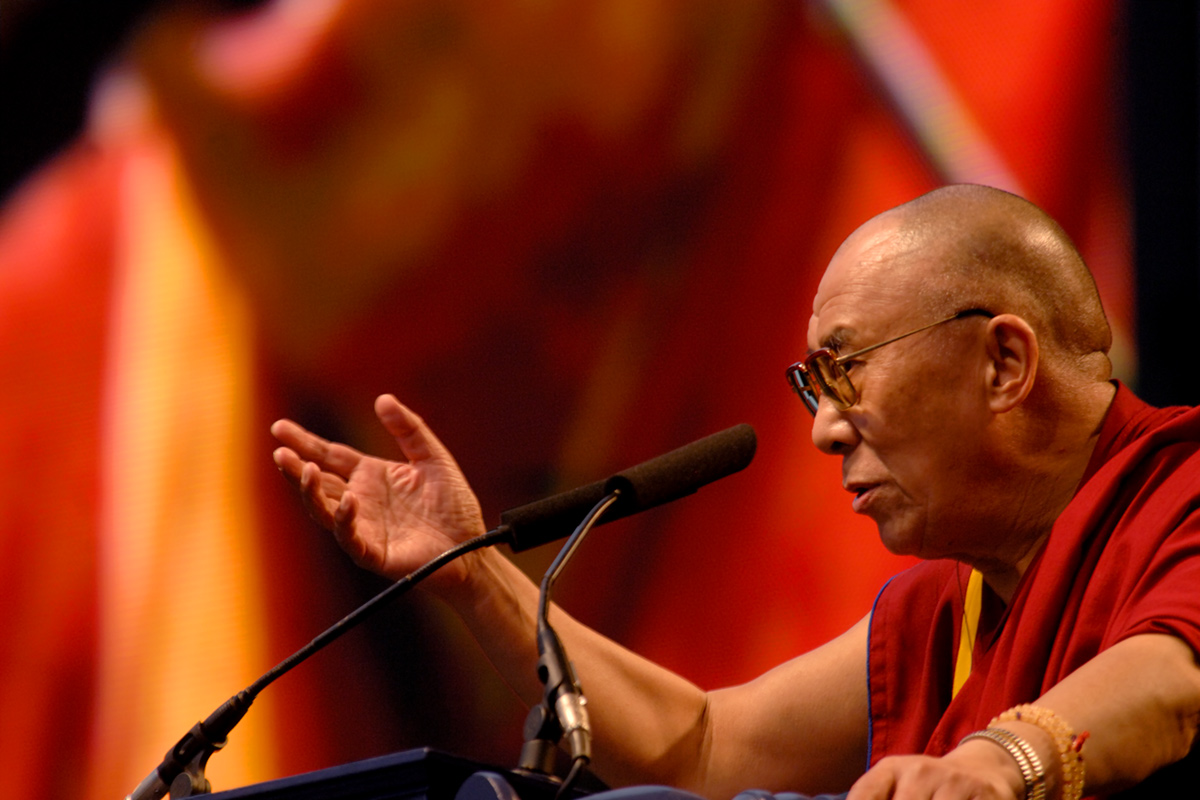Living Legacies

155. Teacher from Tibet
Despite a light drizzle, several thousand people flooded Atlanta’s Centennial Park in October 2007 to see Emory’s new Presidential Distinguished Professor, His Holiness the XIV Dalai Lama. Building on the decade-long relationship of the Emory-Tibet Partnership, the Nobel Peace laureate and spiritual leader of the Tibetan people in exile had accepted his first-ever university appointment. He also had a request: that Emory develop a science curriculum to be taught to Tibetan monastics to prepare them for the 21st century. The Emory-Tibet Science Initiative was created, with dual English-Tibetan textbooks, visiting Emory professors teaching monks and nuns in Dharamsala, and monastics in crimson robes sitting in science classes at Emory. The Dalai Lama, and his ever-present smile, returned to the university in 2010 and took part in an interreligious Happiness Summit and other public events that once again brought thousands of visitors to campus. Science and spirituality in collaboration, the Dalai Lama said, have the “far-reaching potential to help humanity meet the challenges before us.”

President Carter at Emory in 2007.
161. Mr. President?
Each autumn, former US President Jimmy Carter holds a town hall meeting at Emory for first-year students. Topics have ranged from peanut farming to foreign policy, but he spends most of the meeting taking questions from students.
174. Active Retirement
Professors retire every year, but many of them remain connected through the Emeritus College, an association of some 520 retired faculty and administrators. Their pursuits include continued intellectual and social engagement with the university.
President Wagner at his 2003 inauguration with Board of Trustees Chair Ben Johnson III 65C.
175. Map to the Future
Let’s face it, it’s rare that the language of a strategic vision statement becomes part of community vernacular—but there, Emory just might be the exception. It’s surprising how often ours is quoted.
When President James Wagner was appointed in 2003, he initiated the creation of a vision statement and a strategic plan that would both reflect Emory’s true strengths and serve as a guide for the future. With the aid of Provost Earl Lewis, leaders envisioned Emory as “a destination university internationally recognized as an inquiry-driven, ethically engaged, and diverse community, whose members work collaboratively for positive transformation in the world through courageous leadership in teaching, research, scholarship, health care, and social action.”
The five core themes of the strategic plan emerged as strengthening faculty distinction, enhancing student quality and experience, creating community and engaging society, confronting the human condition, and exploring new frontiers in science and technology. The plan serves as the framework for Campaign Emory, launched in 2008 with a goal of $1.6 billion.
Since then, the strategic themes have shifted and sharpened with Emory’s progress, and there is no doubt that the university’s financial position and the campaign have been affected by the national economic downturn. But, Wagner says, the foundation remains sound. “It is indisputable that the times are having a profound impact,” he said in a 2010 report. “Nevertheless, we have been true to our vision, and the course we charted five years ago in developing our strategic plan continues to serve as a reliable road map toward our destination.”






